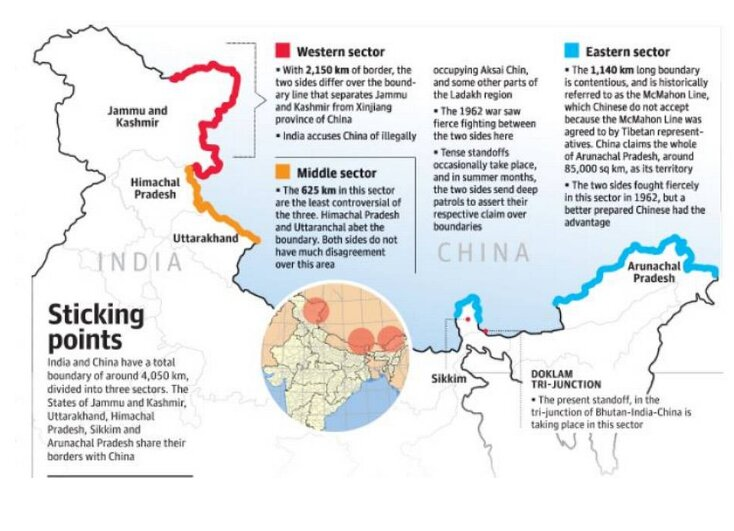Army Opens Himalayan Battlefields to Boost Tourism | 12 Sep 2024
Why in News?
Recently, in a move to enhance border tourism and match China’s infrastructure efforts along the Line of Actual Control (LAC), the Indian Army has opened up historic battlefield locations in the Himalayas for tourists.
Key Points
- Tourism Infrastructure Development:
- India has identified 100 additional villages along the LAC to create infrastructure for tourism as part of a multi-pronged approach to counter China's efforts in the region.
- The Army is opening up Himalayan locations where key battles, such as the Kargil conflict,1999 took place.
- Tourists are now allowed to visit Tiger Hill, a critical site during the Kargil war.
- Border Security and Deterrence:
- According to the Army, opening these inaccessible areas and developing infrastructure in border regions will act as a deterrent to claims on undemarcated borders with China.
- A pilot project for tourism is being set up in Zemithang, the last Indian village near the LAC in Arunachal Pradesh. This is the route through which the 14th Dalai Lama entered India in 1959.
- Line of Actual Control: It is divided into three sectors.
- The eastern sector which spans Arunachal Pradesh and Sikkim (1346 km).
- The middle sector in Uttarakhand and Himachal Pradesh (545 km).
- The western sector in Ladakh (1597 km).
- The alignment of the LAC in the eastern sector is along the McMahon Line of 1914.
- Case of Arunachal Pradesh: India's claim line is different from that of the LAC. It is the line seen in the official boundary marked on the maps as released by the Survey of India, including Aksai Chin (occupied by China). The state of Arunachal Pradesh is an ‘integral and inalienable’ part of India.
- In China’s case, LAC corresponds mostly to its claim line, but in the eastern sector, it claims the entire Arunachal Pradesh as South Tibet.
- China’s Intention: There have been reports of Chinese construction of villages in Arunachal Pradesh, 5 kilometres from the Bum La pass.
- The construction of the village has been seen by analysts as a move to bolster China’s claim to the area, and part of a broader recent push by China to build civilian settlements in disputed frontier areas, which it has also done with Bhutan.

